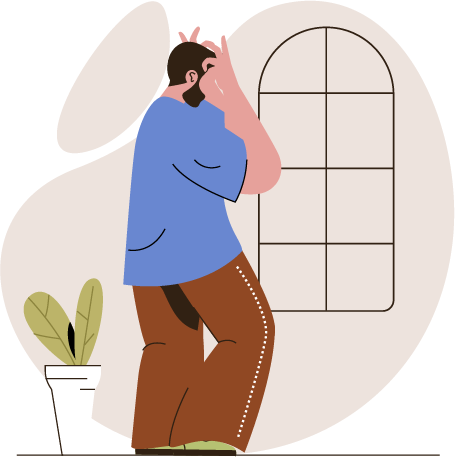Self Harm
Self-harm is when someone hurts themselves on purpose as a way of trying to manage distressing or overwhelming feelings and experiences. Someone who is self-harming might be dealing with lots of intense thoughts and feelings, and hurting themselves may feel like the only way to cope. Or, they might feel numb and hurt themselves in order to feel something.
If your child is self-harming, or you’re concerned they might be, it can be incredibly worrying and upsetting for you as their parent. The important thing to remember is that you and your child are not alone - lots of young people go through this and come out the other side with different ways of coping with their feelings.
Why do young people self-harm?
Self-harm is usually a way of trying to manage very difficult feelings. People often self-harm when life feels hard to cope with – when lots of distressing feelings have built up and it’s become overwhelming. In the moment, the sensation of self-harming and experiencing some physical pain can feel easier than feeling out of control emotionally.
If a young person is self-harming, it’s often a sign that something in their life isn’t quite right or has become too much to deal with. It can be understood as an important message about how a young person is feeling – one that needs to be noticed with care by the adults around them.
Some myths you might hear about self-harm can make it harder to talk about as a parent – including that it’s a ‘phase’ young people go through, or that it’s an attention-seeking behaviour.
While it might feel hard to understand sometimes from the outside, self-harm can be a way for a young person to:
- manage, reduce or express very strong and upsetting emotions – such as hurt, sadness, anger, fear or feeling bad about themselves
- relieve tension and pressure, or reduce feelings of panic and anxiety and temporarily feel calmer
- experience a feeling of physical pain to distract from emotional pain
- gain a sense of control over feelings or problems – for example, by feeling there’s something they can do when things feel too much
- stop feeling numb or ‘zoned-out’ – which can be a protection mechanism our bodies use when we’re experiencing overwhelming feelings
However, while it often feels like self-harm brings some relief in the moment, this is only temporary. As feelings build up again, so does the urge to self-harm. As this cycle continues over time, a young person may start to feel ashamed, confused or frightened about the fact that they’re self-harming – increasing the load they’re carrying on top of what they’re already going through. This can become a cycle that’s really hard to break, and a habit that’s hard to stop.

Parental Tips
Over the longer-term, becoming more aware of how they feel when they self-harm, what’s making them feel this way and what kinds of things help, will empower your child to feel more in control. This will hopefully reduce the sense of being overwhelmed and the feeling that they need to self-harm. You can find more tips about this below. When the urge to self-harm does build in the moment, having a list of other things they can do straight away can also help your child to ‘ride the wave of’ their intense feelings without self-harming. Remember that different things will work for different people, and that what helps will usually depend on the feelings your child is trying to manage. Some young people will want to do something soothing like wrapping themselves up in a comfy space, while others might want to do something very active to burn off the energy in their body.
Talk to your child about different strategies they could try, while also giving them space to find their own ways of coping and figure out what works for them. Strategies could include:
- Making and using a self soothe box
- Writing down how they’re feeling in a journal
- Writing down difficult feelings on pieces of paper and then ripping them up
- Ripping up a magazine or newspaper
- Hitting a soft cushion, pillow or bean bag
- Listening to loud music
- Having a shower
- Doing some exercise
- Going for a walk outside, or taking the dog for a walk
- Focusing on their breathing – how it feels in their body to breathe in and out
- Wrapping up in a blanket or duvet
- Talking to someone – a friend, family member or calling a helpline
- Tidying or organising something
- Doing a hobby they enjoy that helps them feel calm, such as painting, drawing, colouring-in, watching a favourite TV programme, playing video games, cooking or baking
Your child might want to use an app like Calm Harm so they have something on their phone that suggests different techniques they can try when they feel the urge to self-harm.
